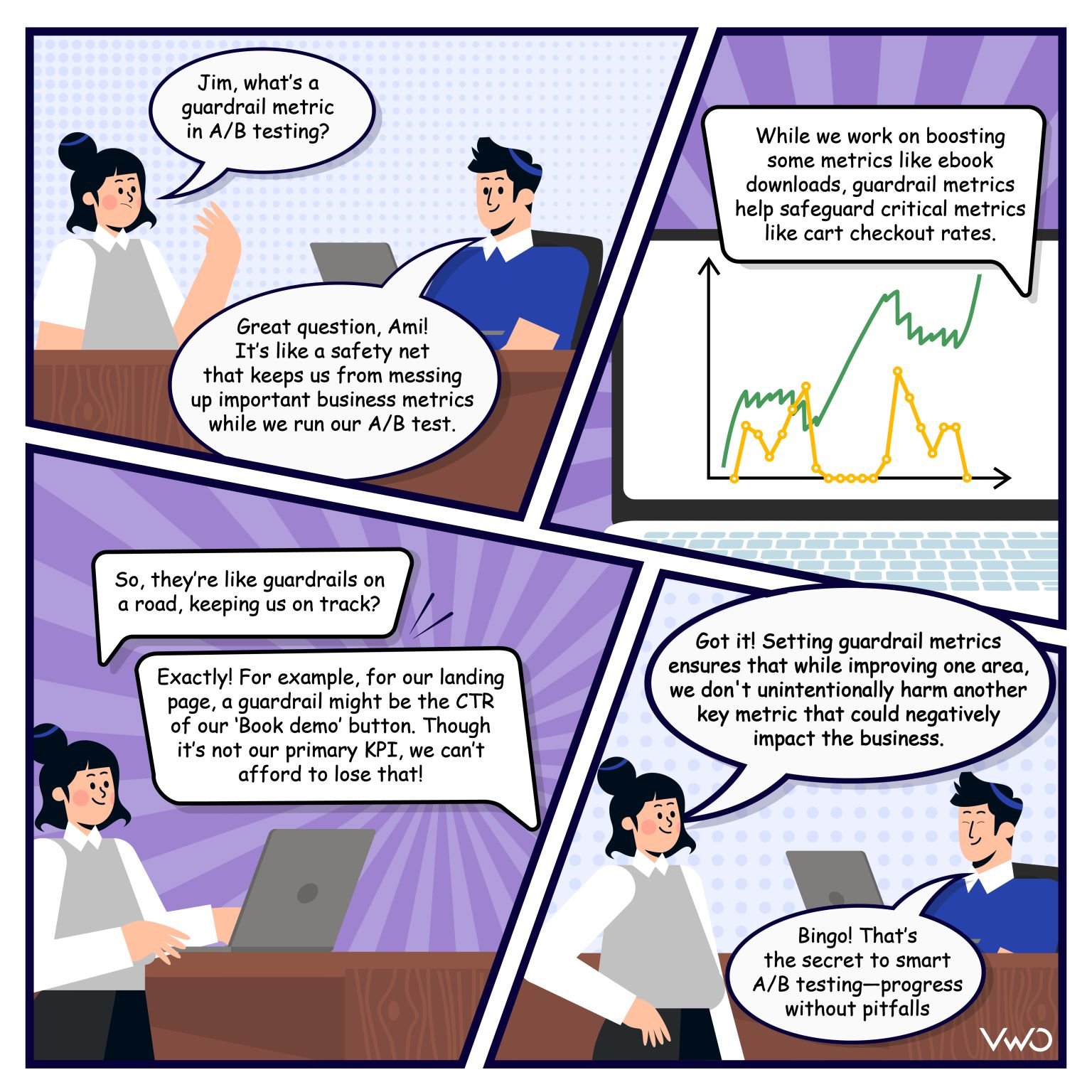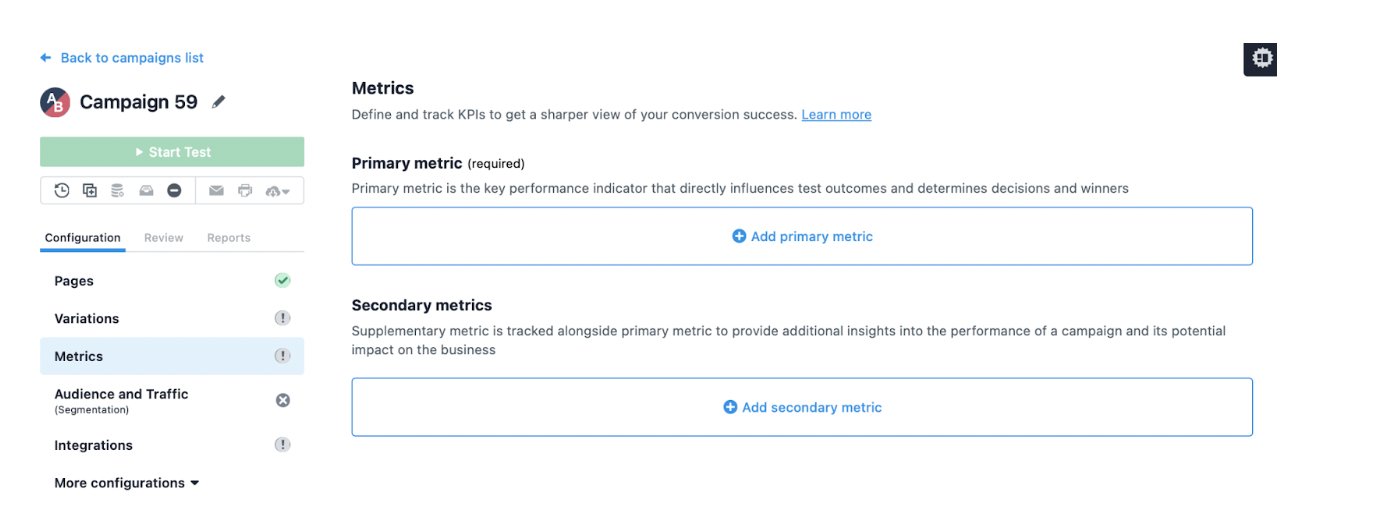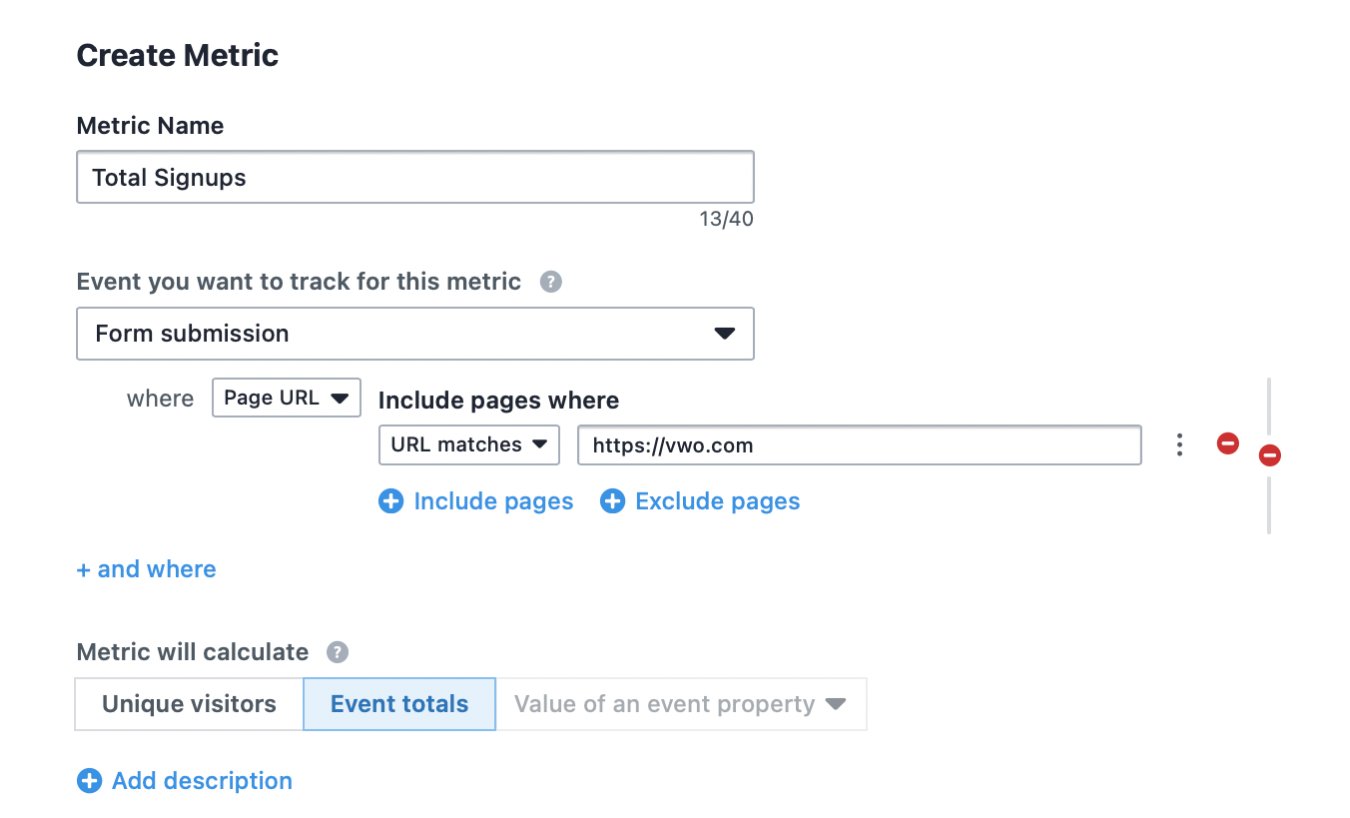What is a guardrail metric?
Guardrail metrics are the business metrics that you don’t want to see negatively impacted while conducting experiments like A/B tests. The guardrail metric setting acts as a safety net, ensuring that while you’re focusing on enhancing certain aspects of your business, you’re not inadvertently causing harm to another critical metric essential for overall success.
An organization can establish guardrail metrics common to all teams to prevent negative impacts during experiments. Additionally, different teams can publicly share their key metrics and request to set them as guardrails to avoid causing harm. For instance, the web performance team may share their key metric like website speed threshold, which the marketing team can set as a guardrail metric when conducting an A/B test.

Example of guardrail metric
Let’s imagine a scenario where a SaaS website is conducting an A/B test to improve scroll depth on its landing page. The original design of the landing page is as follows:

The A/B test involved testing a variation with a scroll-down feature for the “know feature” text in the first fold. To safeguard against unintended consequences, a guardrail metric was established to ensure the visibility and effectiveness of the “Book demo” call-to-action (CTA) in the first fold remained prominent and unaffected.
Throughout the test phase, the team meticulously analyzed user engagement metrics, and conversion rates, and gathered feedback. After a few weeks of experimentation, the data revealed a remarkable 20% boost in user scroll depth. Importantly, this increase was achieved without compromising the visibility or effectiveness above a threshold of the critical “Book demo” CTA. The successful outcome showcased a well-balanced approach, achieving increased scroll depth while ensuring there was no negative impact on the guardrail metric.
Types of guardrail metrics
To secure a continuous enhancement of your website or digital touchpoint experience while safeguarding your ROI, it’s crucial to monitor different types of guardrail metrics. Here are the types of guardrail metrics you should keep an eye on:
- Financial metrics that have a direct impact on the revenue generated through your digital touchpoint, such as the checkout button click-through rate (CTR).
- Metrics that track user experience, including engagement rate, scroll depth, time duration, and CTR, website speed.
- The business-specific metric that changes at specific time intervals, for example, a business quarter aim, might be to reduce churn and track metrics that measure engagement from existing customers.
Benefits of using guardrail metrics
Setting a guardrail metric for an experimentation campaign offers key advantages:
a. Risk-averse approach
It maintains a risk-averse approach while enabling improvements, ensuring a balance in performance for your key business objectives.
b. Complex relationship insights
It facilitates the understanding of complex relationships between various parameters that may be overlooked during hypothesis creation.
c. Coordination between teams
An organization can ensure that individual teams working to improve respective key metrics don’t inadvertently harm other team metrics.
d. Ease for future hypotheses
The insights gained from tracking guardrail metrics aid in formulating hypotheses by providing clear guidelines on what to avoid for future hypotheses.
Setting and tracking guardrail metrics with VWO
Creating a guardrail metric with VWO is a straightforward process. Suppose you wish to set a guardrail for the form signup rate on your website. The image below shows the VWO interface with the required metric setup.
Once you have successfully created the metric, applying it to your VWO campaigns is a straightforward process. In any experimentation feature, like VWO Testing, you can access the VWO dashboard where you manage your metrics and goals. Set the primary metric as the one intended for the test and select the secondary metric as the guardrail metric you created.

By incorporating a guardrail metric into your VWO campaigns, you ensure a robust monitoring system that allows you to track and safeguard crucial business metrics during experimentation.
If you want to explore the VWO dashboard, discover how to set guardrail metrics, and utilize other experimentation features to enhance your CRO campaigns, we offer a comprehensive 30-day free trial. Give it a try and unlock the potential for optimizing your conversion rates!
Conclusion
In conclusion, guardrail metrics are crucial for businesses looking to conduct experiments and improve their key metrics without causing harm to other critical metrics essential for overall success. By setting and tracking guardrail metrics, organizations can maintain a risk-averse approach, gain insights into complex relationships, and ensure coordination between teams.











